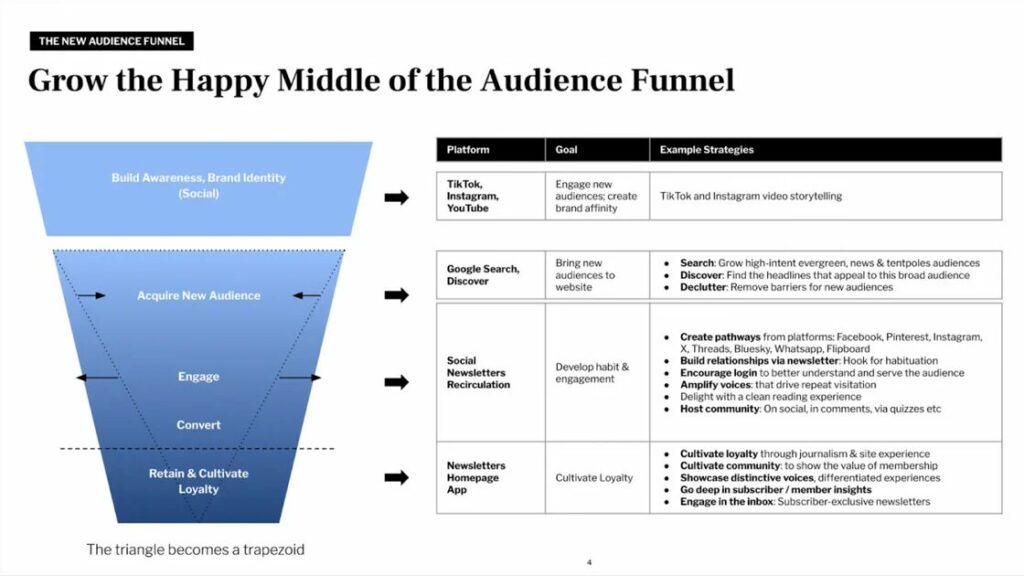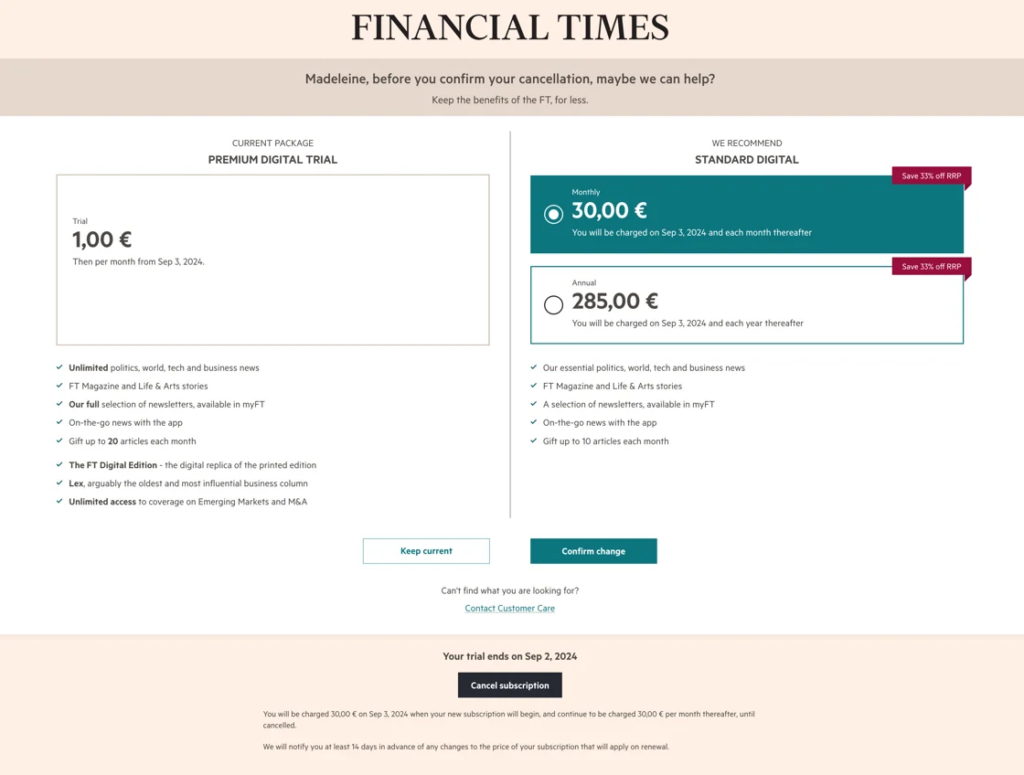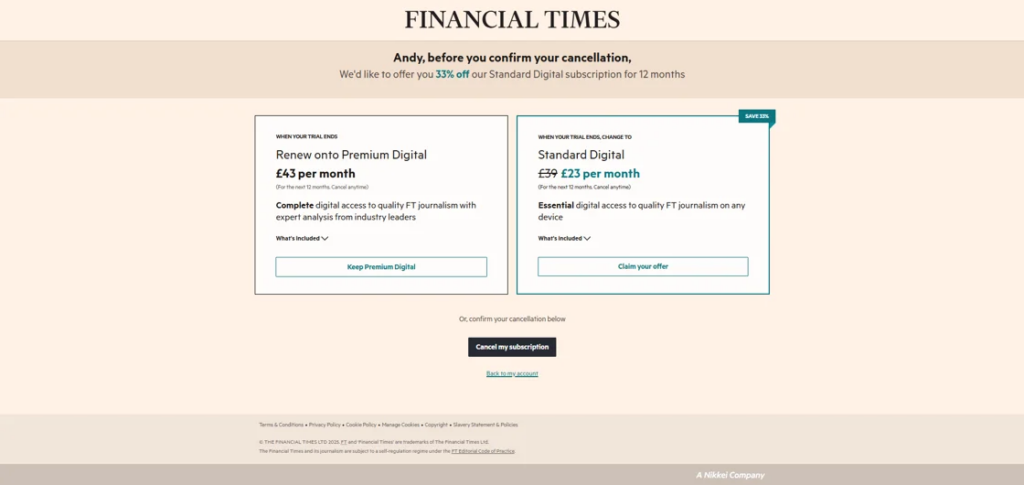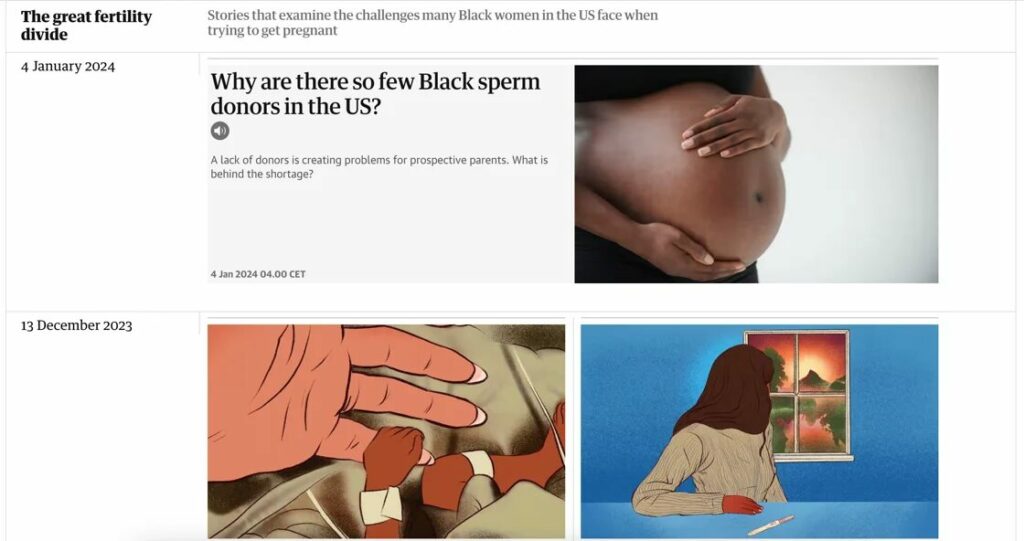

You're reading The Audiencers' newsletter #68 sent out on July 23rd, 2025. To receive future newsletters straight to your inbox every two weeks, sign up here.
In today’s newsletter:
- If you’re working on User Needs, you’ll want to check out these articles on The Audiencers
- How Condé Nast is growing the happy middle of the audience funnel: takeaways from Sarah Marshall’s session at our London Festival
- FT improves the UX of their cancellation journey: see the before and after
- How The Guardian US meets underrepresented communities where they are: we sit down with Ava M. Macha to hear about her unique job title
How Condé Nast is growing the happy middle of the audience funnel
The classic top-of-funnel channels like Google search and “Ten blue links” – long associated with driving traffic – are becoming “old news” as AI Overviews and AI mode outcompete outbound links to content producers.
But whilst we can’t influence search’s evolution, or its impact on visibility, that doesn’t mean abandoning user acquisition. It means prioritising what we can control: strategically engaging and retaining existing audiences.
According to Sarah Marshall, VP, Audience Strategy at Condé Nast, who spoke at The Audiencers’ Festival this June thanks to an invitation from WordPress VIP, the focus should be on cultivating the “happy middle”. We should turn the audience funnel from an inverted triangle (wide top, narrow bottom) into an inverted trapezoid (wider middle).

> Khalil summarises how she’s implementing this at Condé Nast on The Audiencers
FT improves the UX of their cancellation journey
I recently went around benchmarking a handful of cancellation journeys (apologies to your retention team, I’m not helping your churn rates!) to help you to find a balance between retaining subscribers, and allowing them to leave easily. You can read through my findings here, but one thing I noticed with FT’s unsubscription journey was this slightly confusing step presenting alternative offers:

The goal of this page is to convince the user to switch offers, rather than cancel. But the page felt busy and confusing.
There’s a lot of information and options, it’s hard to compare the offers and, most importantly, the “Cancel subscription” button was below the fold. The team shared that this led to users not understanding the page, clicking on “Keep current” and then starting the journey again (I admit to doing just this!)
So, in comes a fresh new design for this page!

Of note: the benefits can be expanded, ensuring the “Cancel my subscription” remains above the fold whilst still providing details to help convince a reader to switch, and the titles/sub-titles help explain the options more clearly.
In the team’s words, the new cancellation journey is designed to be:
- Trustworthy and transparent to align with FT values
- Provide helpful context setting and articulation of pricing and discounts
- Improved design for mobile users to meet audience behaviours
- Summarised benefits, tailored to a trial customer who may not be familiar with the detail yet
How The Guardian US meets underrepresented communities where they are
When I saw Ava M. Macha’s unique job title, Audience Engagement Editor for Underrepresented Communities at The Guardian US, I just had to chat to her, and I’m so glad I did – this is definitely an article that every editorial team should read!
In the interview, we discuss this work in practice with the example of “The Great Fertility Divide”, an ambitious editorial series looking at racial disparities in fertility care in the U.S. The subject demanded nuance, credibility, and above all trust.

Rather than treating engagement as a last-minute callout or just social promotion after the stories were published, Ava embedded herself in private online communities to learn about audience needs, designed callout questions with care, and ultimately helped the stories reach real target readers who felt that stories were written for them and not just about them.
“We approached people not just as sources, but as co-owners of the topic. That changes everything.”

The lessons for better serving these audiences was clear:
-> Don’t just ask for stories — build around communities.
-> Make an effort to share your story in niche communities: mainstream channels might deliver volume — but in this case, intimate, topic-specific groups delivered trust, nuance, and authentic responses.
-> Close the loop: This isn’t extractive journalism, it’s participatory.
You can read the full interview on The Audiencers
If you’re working on User Needs, you’ll want to check out these articles on The Audiencers
> The game-changing 6-week user needs course (sent by email) from Khalil A. Cassimally to get internal buy-in, prepare for implementation, run an audit, build a cross-functional team and scale your user needs operation
> Understand Dmitry Shishkin & smartocto’s User Needs 2.0 plug-and-play model
> Benchmarks on how other media organisations have adapted the User Needs Model to their content and audience, including examples from Ringier, Berlingske, Vox and TBIJ
> If you’re in need of data to convince stakeholders of the value of user needs, Stefan ten Teije shares how the user needs approach boosts engagement here
> And we couldn’t talk about user needs without Lars K Jensen – here he discusses how implementing user needs is cultural change and how you can successfully implement user needs with this in mind
See you in two weeks for the next newsletter,
Madeleine


